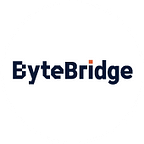Apple Harvesting Robot
On November 1, 2021, in an apple production base in China, an apple harvest robot was undergoing a picking test operation.
“Considering the labor shortage and relatively high labor cost for picking apples this year, the company cooperated with Alibaba to use robots to pick apples,” said Mr. Tian, the head of the base. The industrial park has a standard planting production surface of 1,000 acres, and it costs nearly 1.5 million RMB to hire workers every year.
When it is reported that a high-tech company was developing an apple-picking robot, the person in charge contacted the company immediately. After several rounds of negotiation and discussion, trial cooperation was finally reached. According to the person in charge, starting from this year, the base has taken advantage of a large number of robots to spray chemical medicine and apply fertilizer, reducing the number of workers and the production cost.
“The use of robots for picking increases the speed and lowers the cost. The apples can be sorted out well during the harvesting process.” Mr. Tian said,
“I think the robot is excellent. If I can use it next year, it will greatly reduce my burden.” Mr. Qu, a fruit farmer, who heard about the picking fruits robot came to visit. He told reporters that his family has 10 acres, and he and his wife are the only workers. Their ability to work is not as good as before as they are getting old. With the help of robots, many fruit growers like him have seen hope.
This type of robot can realize 24-hour real-time operation and is expected to pick 15,000 kilos a day. It is currently in the test and improvement stage, and mass production and sales are expected to be realized in 3 years.
Why the High-Quality Training Data is so Important to AI Machine Learning?
From the perspective of the research direction of artificial intelligence technology, whether in the field of traditional machine learning or deep learning, supervised learning based on training data is still a major model training method. Especially in the field of deep learning, more labeled data is needed to improve the effectiveness of the model.
In the process of in-depth industrial landing, there is still a gap between artificial intelligence technology and enterprise needs. The core goal of enterprise users is to use artificial intelligence technology to achieve business growth. Actually, artificial intelligence technology itself cannot directly solve all the business needs. It needs to create products and services that can be implemented on a large scale based on specific business scenarios and goals.
If the general datasets used by the previous algorithm model are coarse grains, what the algorithm model needs at present is a customized nutritious meal. If companies want to further improve certain models’ commercialization, they must gradually move forward from the general dataset to create their own unique one.
Common Labeling Types:
- Object Recognition
- Crops Monitoring And Weeds Control
- Pest & Disease Diagnosis
- Fruits Growth Dectection&Live Stock Monitoring
- Object Classification
- Farm Automation
- Agricultural Robot Crop Harvesting
- Auto Pesticide Spray
- Soil Management
- Fruits Picking
End
Outsource your data labeling tasks to ByteBridge, you can get the high-quality ML training datasets cheaper and faster!
- Free Trial Without Credit Card: you can get your sample result in a fast turnaround, check the output, and give feedback directly to our project manager.
- 100% Human Validated
- Transparent & Standard Pricing: clear pricing is available(labor cost included)
Why not have a try?
source: https://www.robot-china.com/news/202111/10/68217.html
